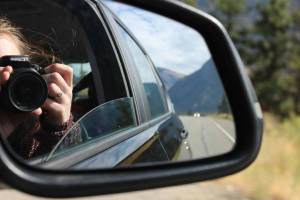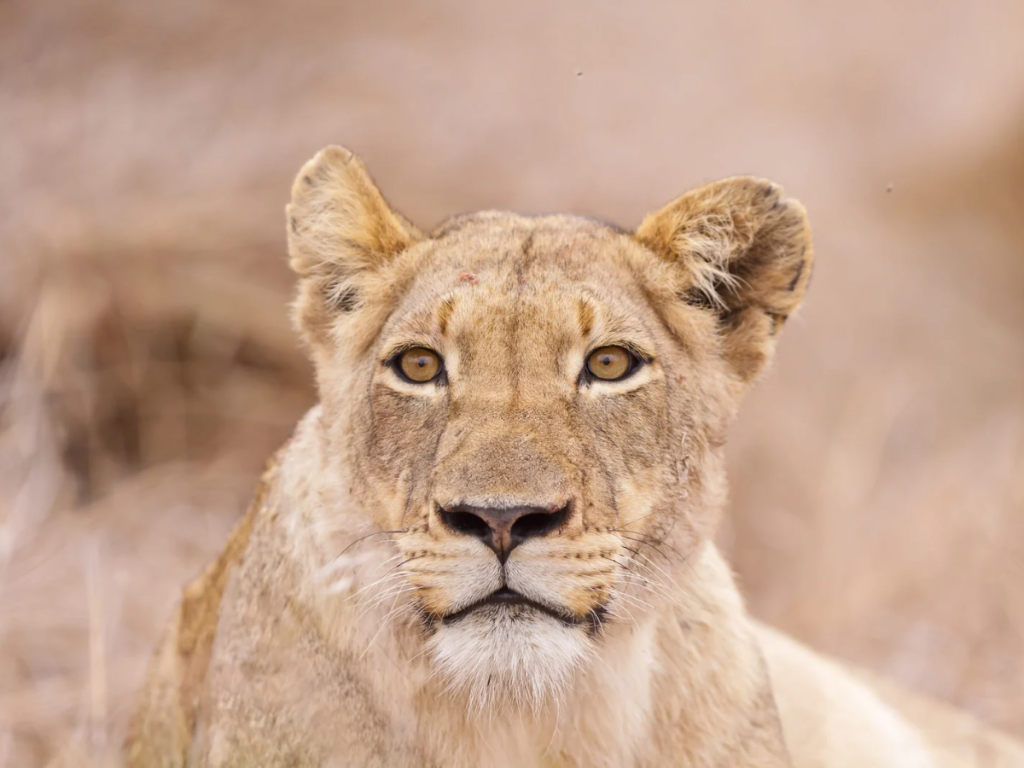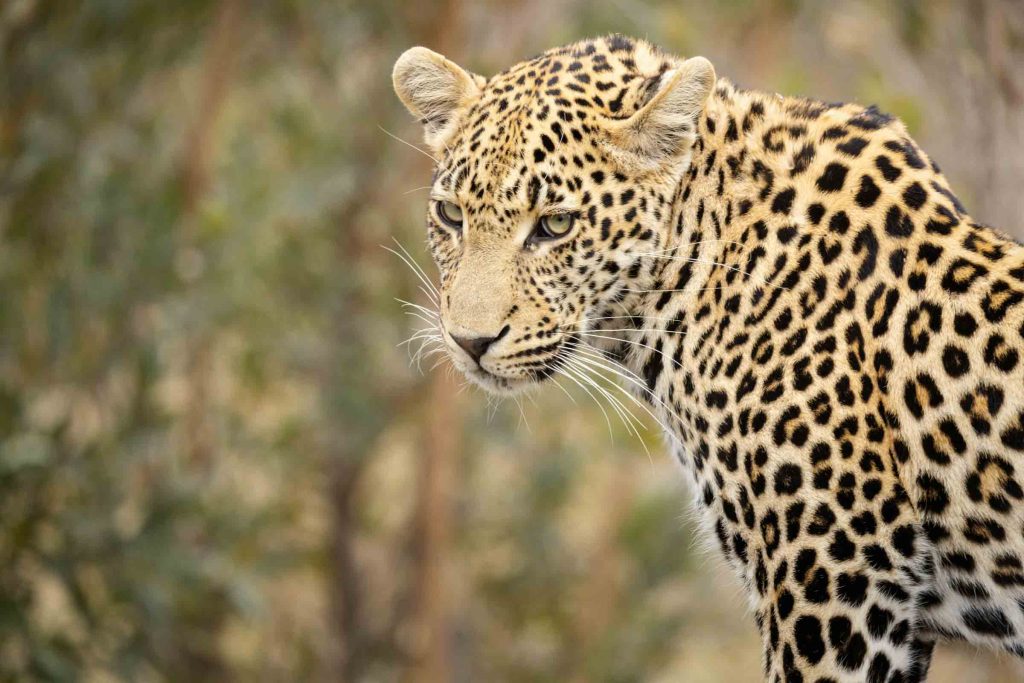
5 Road Trips to Enjoy Over Easter Weekend 2025
Easter Weekend is one of South Africa’s most popular times for adventurous getaways, with local...
 14 April 2025
14 April 2025 
South Africa is renowned as one of the best places in the world to see wildlife. In fact, it’s home to eight distinct biomes: grasslands, savannah, forest, fynbos, the succulent Karoo, the Nama Karoo, desert, and thicket. This diversity provides habitats for an incredible range of species that includes about 300 mammal species, 400 reptile species, and well over 850 bird species. A staggering 8,000 plant species have been identified to date.
The country is also justly famous for its extensive and well-managed national parks and reserves like Kruger National Park. Plus, it has a well-developed tourism infrastructure that attracts millions of visitors each year. Expert guides, game rangers and experienced tour operators support the industry and provide excellent service and guidance to travellers.
South Africa is also a world leader in wildlife conservation, with sterling work being done in protecting endangered species like black rhinoceroses, African wild dogs, cheetahs, and pangolins. With a stunning coastline of more than 3,000 km, South Africa offers stunning marine wildlife sightings of great white sharks, southern right whales, humpback whales, and various species of dolphins and seals.
Eager to see these animals on a self-drive adventure? Let’s take a look at 10 iconic species you can expect to see on your next South African road trip.

With lion populations declining sharply all over the world, South Africa is one of the last strongholds of these magnificent apex predators. It’s estimated that South Africa’s lion population has currently increased to about 3,500 lions, about 17% of the total global lion population. In many African countries ,wild lion populations are threatened and face extinction.
Lions are very social cats. They live in matriarchal units called prides that are centred around related females. The pride interacts with territorial males or male coalitions, but they aren’t usually an integral part of the pride. Male lions are generally significantly bigger than females, particularly with their often magnificent manes.
Lions are carnivores and the ultimate opportunists as regards feeding, meaning they will basically eat anything they can hunt! They’re also consummate scavengers when the opportunity occurs. Their prey species range from a hare, tortoise or baby impala right up to giraffes and buffalo, the latter being their most dangerous prey.
Timbavati and the Kruger’s famous “white lions” are born as a result of a recessive gene that gives them their stunning whitish coats and intriguing pale bluish/greenish eyes. It is thought that there are currently three wild white lions in the Greater Kruger area. Lions naturally also occur in the Kgalagadi Transfrontier Park in the Kalahari and the Hluhluwe–Imfolozi Park in KwaZulu-Natal.
These stunningly beautiful, solitary, and elusive predators are South Africa’s second-largest big cats. They occur throughout the country in habitats ranging from coastal areas to forests, mountains, deserts, semi-deserts, and bushveld. The Sabi Sands Game Reserve in the Greater Kruger is renowned for its spectacular leopard sightings.
Leopards are nocturnal predators, but hunt during the day as well. They have distinctive yellowy-golden coats with black spots and rosettes, and long, white-tipped tails. Sizes vary, but males are significantly bigger than females. They’re famous for hoisting their prey into trees and their strength in doing so is remarkable.
They will prey on anything they can catch: antelopes, rock hyrax, baboons, springhares, reptiles, and even fish. Leopard cubs are born in a well-hidden den after a gestation period of about three-and-a-half months. They are cared for entirely by the mother and stay with her for at least a year.
The African elephants found in South Africa are a hugely powerful keystone species. They live up to 70 years of age, and have a gestation period of 22 months. Adult bulls can stand up to three metres high and weigh around 6,000 kg.
Females are significantly smaller, but still weigh in at an impressive 3,600 kg – that’s close to 8,000 pounds! Elephants live in natal herds that consist of an experienced matriarch, her female relatives and siblings, and their calves. Young males leave the herd at between 12 to 15 years of age. Dominant roaming bulls only join the herds for mating.
Elephants are extraordinarily intelligent. They have close ties with relatives and are fiercely protective. They exhibit emotions like joy, anger, sadness, mourning and even an awareness of death. They’re browsers and eat prodigious amounts of grass, leaves, bark, roots, and fruit. They are very water-dependent and can drink more than 200 litres per day. They even dig for water in dry riverbeds, thus creating a water source for other animals.
The sable antelope is a large, rare and endangered antelope in South Africa, mostly concentrated in the Kruger Park these days. They have beautiful glossy black coats, white underparts, and distinct white facial markings. Bulls can weigh up to 270 kg (close to 600 pounds) and cows are a bit smaller.
Both males and females have long, scimitar-shaped horns and they feed predominantly on grass and sedges. Their favourite habitats are open savannah woodlands and marshy areas. Sables are known for their combative behaviour and will even face off lions with their razor-sharp horns!
Spotted hyenas have suffered an undeserved bad reputation from years of inaccurate storytelling and misrepresentations in films like The Lion King. They have immensely strong jaws and are highly successful predators and formidable hunters that display intelligent hunting strategies. They are far from cowardly and will even attack lions to defend clan members.
Females rule the roost, and are bigger and stronger than the males. Hyenas’ complex hierarchical, matriarchal social structure devolves around a dominant female who leads the clan.
Hyenas communicate through a wide variety of vocalisations and body postures that we’re only now beginning to understand. They play a critical role in maintaining a healthy ecosystem and reintroducing calcium into the environment.
In the midst of the ongoing scourge of rhino poaching, South Africa plays a critical role in rhino conservation. It has the largest population of rhinos in the world, and most of them are found in protected reserves.
Black rhinos (Diceros bicornis) are particularly threatened, though game reserves in South Africa have successfully increased rhino populations. White rhinos are grazers, and black rhinos are browsers with specially adapted pointed lips to do so efficiently.
White rhinos (Ceratotherium simum) were brought back from the brink of extinction under the inspired leadership of the renowned conservationist, Dr Ian Player. Rhinos can be seen in various private game reserves as well as the Kruger and the Hluhluwe-iMfolozi in KwaZulu-Natal.
The martial eagle is one of the world’s most magnificent raptors and the largest eagle in Africa. They’re immensely powerful and reputedly capable of breaking someone’s arm with the power of their talons. They weigh close to 6.5 kg, and their wingspans reach nearly two metres.
Adult birds have dark brown upper parts, black-streaked white bellies, and white legs. The female is noticeably bigger than the male. Their varied diets include guineafowl, geese, francolins, monitor lizards, snakes, hares, squirrels, hyrax, monkeys, and even small antelopes. Their nests are huge structures that they use for many years. Incubation takes about 45 days and is usually done by the female.
The babies are very weak when they hatch, and parents feed them until they’re about three months old after which they start tearing up their food themselves. They take their first flight when they’re about 100 days old.
Though listed as vulnerable, the great white shark has long loomed large as a nightmare creature in the human mind. Thanks, Jaws! It’s the world’s largest macro predatory fish and is known for its immense size. The largest preserved female white shark clocked in at a whopping 2,000 kg and was close to 6 metres in length!
Great whites can live for over 70 years, and they keep growing new teeth all their life. An apex predator of note, the great white preys on seals, dolphins, fish, other sharks and even seabirds. They can reach swimming speeds of 25 km/h and can descend to huge depths in the ocean.
The great white’s only recorded natural predator is the orca or killer whale, and in South Africa, orcas have been observed hunting great whites to the point of impacting their populations. A decline in white shark sightings has been observed, particularly in False Bay and Gansbaai (near Cape Town) both known as white shark hotspots. Cage diving with sharks in Cape Town is a thrilling and popular adventure activity.
The honey badger (Afrikaans: ratel) is one of South Africa’s most iconic creatures due to its distinct appearance, versatile hunting behaviours, and fearsome reputation. They were even named the “most fearless animal in the world” in the Guinness Book of World Records in 2002!
They have jet black fur with a gray mantle and a distinct white stripe running down the back. Though only between 250 to 300 mm in height and about 12 kg in weight, their broad bodies, short legs, and impressive claws all add up to a very powerful little creature. In SA, they’re synonymous with courage, toughness, and ferocity when attacked. They can defend themselves against much larger animals like lions and leopards.
As solitary omnivores they often forage on their own with their distinctive and tireless lope. Their diverse diet includes rodents, insects, snakes, reptiles, birds, amphibians, berries, fruit, roots, and bulbs. They also love honey and honeybee larvae, and the honeyguide bird will lead them to a hive. The badger will open the hive, undeterred by bee stings, feed, and reward the honeyguide with scraps. Pale chanting-goshawks also often follow honey badgers around for the prey that they flush.
Endangered African penguins, also known as Cape, South African or jackass penguins (due to their donkey-like bray), are endemic to southern Africa. They breed in colonies on many islands between Namibia and Algoa Bay, and on the mainland at Boulders Beach and Stoney Point. About 3,000 animals have established themselves on and in the beaches and gardens of Simon’s Town.
They’re one of the smaller penguin species, standing only about 610 mm tall. They’re characterised by a black stripe around their torsos and unique black spots on their chests. The pink glands above their eyes are for temperature regulation.
African penguins can propel their streamlined bodies when hunting at speeds of up to 20 km per hour! They feed on pilchards, anchovies, sardines, herrings, mackerel, squid, and krill. The African penguin’s habitat is threatened by human activities, oil spills, overfishing, and habitat degradation.

Photo: Unsplash
So, are you raring to come to South Africa and experience this outstanding wildlife destination for yourself? Will you need a suitable, reliable and comfortable vehicle for your South African adventure?
Drive South Africa offers a wide range of affordable and reliable vehicles for hire. Our standard vehicles are suitable for most national parks in South Africa, but if you’d like a more off-road experience we have 4×4 vehicles for hire too. And if you want to go camping, we’ve got RVs for hire to do it in comfort and style!